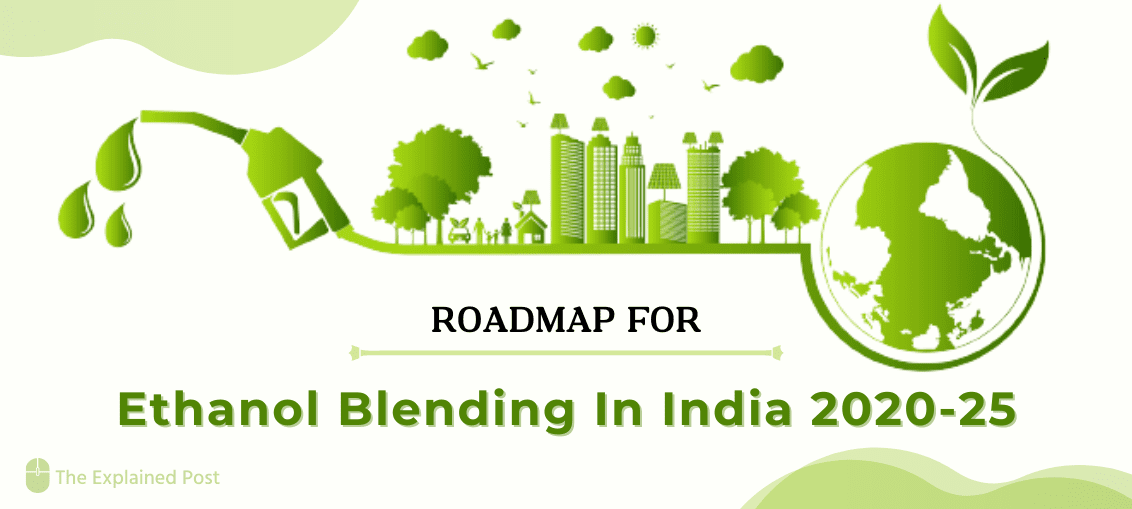On World Environment Day, June 05, 2021, the Indian Prime Minister, Narendra Modi released the report of the expert committee for Ethanol blending in India by 2025. The report suggests that 20% ethanol blending in India is within reach. It lays out a detailed plan to achieve the targets of the E20 roadmap in a phased manner.
The E20 roadmap has many benefits such as saving around 30,000 crore of foreign exchange per year, energy security, cleaner energy, better air quality due to better combustion and others. So, what is ethanol blending? and how the E20 roadmap will be implemented? Here are all the answers.
What is Ethanol?
Ethanol, also known as ethyl alcohol is an organic carbon compound, primarily used in beverages like beer and wine. It is also used in several beauty care products.
Natural production of ethanol can be done from the fermentation of biomass such as sugarcane. It has a higher octane number than gasoline, making it a cleaner fuel resource and mixing it with petrol increases the octane number of gasoline. The higher oxygen content in ethanol helps in better and more efficient burning of fuel, as a result, lower carbon emission and reduced air pollution.
The E20 roadmap
The expert group has recommended specific responsibilities of the union government, state governments and vehicle manufacturers for the production, supply and gradual rollout of 20% ethanol blending in petrol by 2025.
- Raise pan-India ethanol production capacity from the current 700 to 1500 crore litres
- Phased rollout of E10 fuel by April 2022
- Phased rollout of E20 from April 2023, its availability by April 2025
- Rollout of E20 material-compliant and E10 engine-tuned vehicles from April 2023
- Production of E20-tuned engine vehicles from April 2025
- Nationwide educational campaign
- Encourage the use of water-sparing crops, such as maize, to produce ethanol
- Promote technology for the production of ethanol from the non-food feedstock.
Benefits of ethanol blending in India
Here are some direct and indirect benefits of ethanol blending.
- Ethanol blending in India will improve the efficiency of fuel. As a result, less carbon emission.
- India currently imports 85% of its oil requirements. The blending of ethanol is expected to reduce the oil import bill and save around Rs 30,000 crore of foreign reserve.
- Better efficient fuel is expected to improve the air quality
- The E20 plan will increase the demand and production of ethanol. As a result, sugarcane production is expected to increase.
- Farmers’ income will increase due to the growing demand of ethanol.
- Since a big demand for ethanol will be met by sugarcanes. It can be considered a renewable and clean energy source.
- Additionally, the waste of food grains, or poor quality food grains can be utilised for ethanol production.
- The ethanol blending programme is also expected to increase employment and income generation activities such as investment.
Also Read | Keystone Species; Definition, Role In Ecosystem, Examples



